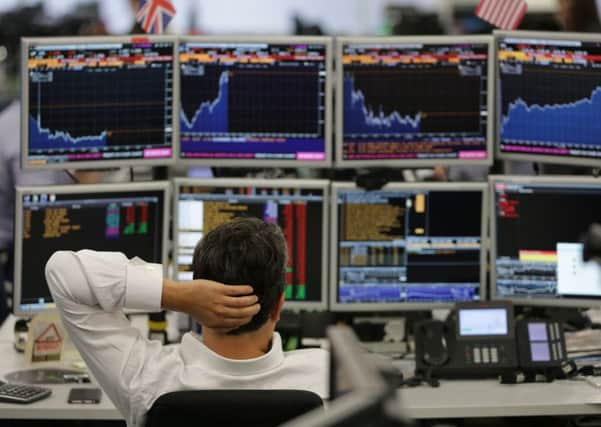Bill Jamieson: Fortunes won and lost in long-run game
This article contains affiliate links. We may earn a small commission on items purchased through this article, but that does not affect our editorial judgement.


In both America and the UK stock markets have been hitting record highs. The Dow Jones Index has now risen 10 per cent since Donald Trump’s election victory. But it is the recent rate of acceleration that gives cause for concern.
The Dow has just chalked up ten daily rises in succession. That is its longest running streak since its record run in early 1987 – the year that saw the biggest percentage daily fall for the US market in history. As the Financial Times columnist John Authers points out, “sharp and unchecked run-ups in price can be a sign of speculative excess”.
Advertisement
Hide AdAdvertisement
Hide AdHe also points out that the market is now looking expensive: looking at ratios of share prices to earnings – a long-established measure of market value – it has only been more expensive before the crashes of 1929 and 2000.
For now, the likelihood is of a market correction – a 12 to 15 per cent fall in values. In due course these form the base for a new upward phase. But they could also be a trigger for a deeper reversal. Here a harsh reappraisal of the Trump presidency may be an avalanche moment – the bursting of the Trump bubble.
A ‘Minsky Moment’, then? The term was named after economist Dr Hyman Minsky. It is describes the period when a market fails or falls into crisis after an extended period of market speculation or unsustainable growth. A Minsky Moment is based on the idea that periods of speculation, if they last long enough, will eventually lead to crises.
Many critics of capitalism have focused on dramatic periods of volatility and turbulence in financial markets that spill over into the real economy as proof of its fundamental instability. But the real danger is to be found in the complacency created by long runs of rising values. It is the complacency, not the turbulence, that kills.
That said, not all bubbles end in busts. As Authers pointed out the other week, there are 460 examples of markets doubling in three years. In the following five years only 10.4 per cent of them halved.
Pricking bubbles before they get too big begins to look threadbare. In the UK in 1975 UK shares doubled that year – and trebled again by the end of the decade.
Attempting to time the market (sales and purchases) based on market valuation measurements more often ends in failure. Markets can easily grow even more overheated, proving the lugubrious conclusion of Maynard Keynes: “The market can remain irrational longer than you can remain solvent”.
Long-run returns
Advertisement
Hide AdAdvertisement
Hide AdIt is always a treat to read the Credit Suisse Global Investment Returns Year Book. The 2017 edition, released last week with statistics going back to 1900, is a mine of information.
We learn that the total real return on an investment of $1 in US shares in 1900 would have grown in value by 1,402 per cent or 6.4 per cent a year. UK shares would have grown by 5.5 per cent over the same period.
There are three caveats to all this. First, you would need to have been around in 1900 to ride the upswing. Second, there have been many bumps in the road. The 21st century began with one of the most savage bear markets in history, and by March 2003, US stocks had fallen 45 per cent and UK equity prices had halved.
World markets hit new highs at the end of October 2007, only to plunge again. Yet, in real terms, it took until 2013 for many of the world’s largest markets to regain their start-2000 level.
And third, you would need to have re-invested all your dividends. It’s the compounding of re-invested dividends that makes such graphs look so spectacular.
My lost Russian fortune
I am reminded of my family’s lost fortune in Russia. My grandfather acquired in the early 1900s a small holding in City of St Petersburg Electricity Bonds. These were bequeathed to my father with the strict admonition that these should not be sold as the Bolshevik revolution was a temporary experiment that would soon collapse.
When I was told this in the early 1960s, how I laughed. But my grandfather was right. The mind boggles to think what that holding in City of St Petersburg bonds would worth now had all the income since 1917 been re-invested.
Unfortunately we are still waiting capital redemption from Mr Putin – and that doesn’t look likely any time soon.
